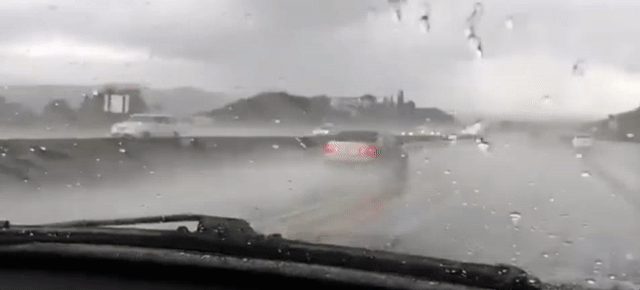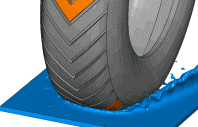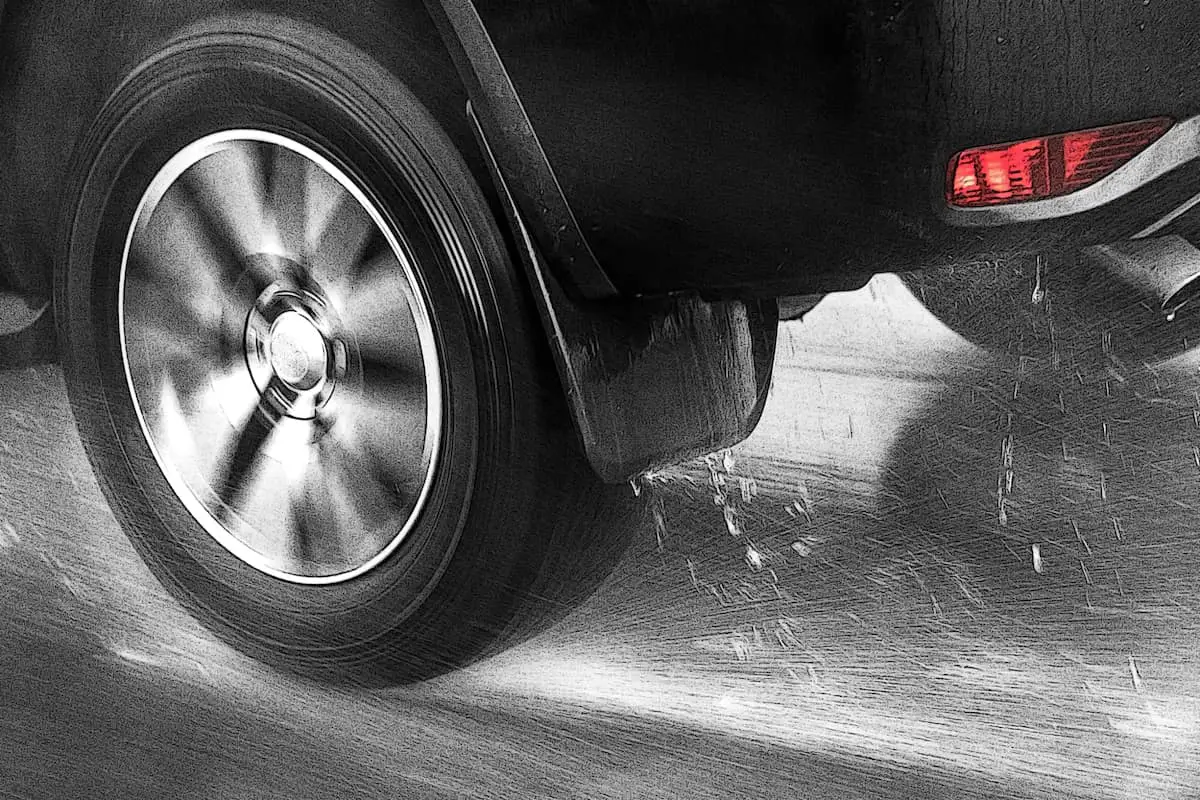Hydroplaning is dangerous when a vehicle’s tires lose traction due to water on the roadway surface. This can potentially cause serious accidents, leading to a complete loss of steering and braking control, leaving drivers unable to respond in time to avoid hazards.
When there’s enough water on the road, tires can no longer grip the pavement correctly and instead skim along the surface. This skidding creates a thin sheet of water between the tire and the roadway surface, known as hydroplaning. It eliminates any contact between the tire and the road, resulting in a loss of control over acceleration and steering.
Please see one extreme example of hydroplaning below:

The amount of water needed for this phenomenon to occur depends on several factors, including vehicle speed, tire depth, tread pattern, type and inflation pressure of tires, and even weather conditions like wind speed. Generally speaking, though, if more than 1/12 inch (2 mm) of water is present on the road, hydroplaning can become an issue for motorists.
For drivers in areas prone to flash flooding or heavy downpours, it’s essential to be aware that even small puddles of standing water can cause hydroplaning if traveling at higher speeds. So it pays to be especially vigilant when behind the wheel during these times. In addition, ensure that your vehicle’s tires have good tread depth (4/32 or greater). As your tires wear down over time, their ability to displace water diminishes significantly -increasing the risk of hydroplaning and reducing overall traction levels.
Please see the traction below:

If you encounter hydroplaning while driving, remember not to panic! Instead, focus on keeping your car pointing straight ahead – resisting any temptation you may have to turn sharply – while lightly pumping your brakes until you regain control over your vehicle’s trajectory again. Additionally, slowing down before entering areas where standing water appears is always recommended to reduce your chances of falling victim to this dangerous driving condition.
Does Insurance Cover Hydroplaning?
Yes, car insurance usually covers hydroplaning, and collision coverage covers damage to your vehicle. Hydroplaning accidents are frequent because only one-twelfth of an inch depth of water is needed to cause hydroplaning.

Hydroplaning is caused when tires lose traction with the road surface due to too much water. It can occur on any surface with standing water, but it’s most common on highways and roads recently treated with oil or other chemicals. When this happens, the tire tread may become filled with water and cause it to slide across the wet pavement instead of gripping onto it as usual. As this happens, the vehicle becomes difficult or impossible for the driver to control as it slides out of their lane or off the side of the road.
Most auto insurance policies do not specifically mention hydroplaning when discussing coverage. However, many include provisions in their liability policies that cover damages related to accidents caused by an inability to control one’s vehicle due to a sudden emergency.
Liability insurance is required in 49 US states, and it pays damages, including medical expenses, for the other driver or drivers if you are at fault in a typical hydroplane accident.
This means that if your vehicle skids out of control due to hydroplaning and causes an accident, your policy will likely cover damages related to medical expenses for yourself or any other driver involved in the accident. Be sure you understand what is covered under your policy before going out driving in wet weather so you know what rights you have if something should happen.
When assessing whether your insurance will cover an incident related to hydroplaning, you need to consider how much water was present on the roadway before your accident and whether it was enough for your tires not to grip correctly and let go of their hold on the ground.
If there was enough water present for there to be a significant amount on your tires as well as surrounding cars’ tires at that time, then chances are good that insurance coverage may apply in this situation since these conditions would indicate an inability of all drivers involved in controlling their vehicles at that moment due to unforeseen circumstances beyond their control—namely excessive rainwater causing slippery conditions.
It is also essential for drivers during inclement weather conditions such as heavy rainfall or snowfall to take extra precautions when driving, such as reducing speed or avoiding certain areas entirely where slippery surfaces could be more prominent than usual (e.g., near drainage ditches).
Taking these extra safety measures may help reduce one’s risk of experiencing hydroplaning by limiting either exposure time or contact between one’s vehicle and surfaces potentially containing large amounts of rainfall – which would otherwise contribute significantly toward increasing slipperiness levels along specific stretches of roads or highways where this might otherwise be difficult even for experienced drivers who are aware of standard safety regulations applicable during such times (e.g., maintaining distance between oneself and other vehicles).
In conclusion, auto insurance generally does provide coverage if an accident occurs through no fault of yours due to slippery ground conditions leading up to hydroplaning happening while driving; however, preventive measures such as reducing speeds or avoiding certain areas entirely should still always be taken into consideration whenever possible during wet weather so as minimize potential hazards stemming from moisture-related risks being present at any given time while operating motor vehicles (especially within busy urban areas).
